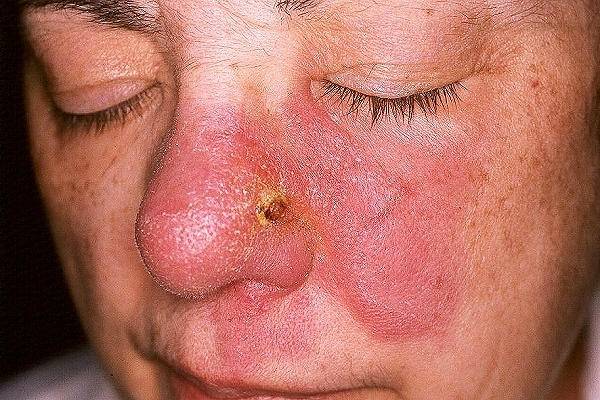This term is used to describe a condition in which there is a sideways curvature of the spine and most often is happening during the growth spurt just before puberty. When we have normal shape of our spine, then it is including a curve at the top of the shoulder and a curve at the lower back. If the spine is curved from side to side or it is curved in “C” or “S” shape, then you might have scoliosis. This condition can be caused by conditions, such as muscular dystrophy and cerebral palsy but in the most cases, the cause for scoliosis is not known and studies are saying that about 80% of cases of people who have scoliosis the cause are not known [1]. The most cases of this condition are mild but there are some children who develop spine deformities which continue to get more severe as they grow. If you have severe scoliosis, then it can be disabling. When you have severe spinal curve, then it can reduce the amount of space within your chest which is making difficult for your lungs to function properly. Those children who have mild scoliosis are monitored closely and usually it is with X – rays because it can help to doctors to see if the curve is getting worse. There are many cases when treatment is not needed. There can be some cases when some children need to wear a brace to stop the curve from worsening [2]. Other children may need surgery to keep the scoliosis from worsening and to straighten the severe cases of scoliosis. Scoliosis is usually diagnosed during the first seven years of a child’s life.
Scoliosis Symptoms
Symptoms: Here are the signs and symptoms of scoliosis:
- One hip higher than the other
- Uneven waist
- One shoulder blade that appears more prominent than the other
- Uneven shoulders
If the scoliosis curve gets worse, then the spine will twist or rotate, in addition to curving side to side. This is causing ribs on one side of your body to stick our farther than on the other side of your body. If you have noticed signs and symptoms of scoliosis in your child, then you should take it to doctor. But the mild curves can develop without the child or parent knowing because they are appearing gradually and they usually are not causing pain. There are some cases when sport teammates, friends, teachers are the first who notice that child has scoliosis.
Scoliosis Symptoms Causes
Causes: Doctors do not know what the cause for the most common type of scoliosis is. It appears that the cause for the most common type of scoliosis is involving hereditary factors because scoliosis tens to run in families. Also there are less common types of scoliosis which can be caused by:
- Injuries to or infections of the spine [3]
- Birth defects affecting the development of the bones of the spine [4]
- Neuromuscular conditions, such as muscular dystrophy or cerebral palsy
Risk factors: There are some factors which can increase your risk of developing the most common type of scoliosis, such as
- Family history: This condition can run in families but most children who suffer from scoliosis do not have a family history of this disease. [5]
- Sex: Both boys and girls can develop mild scoliosis at about the same rate. Girls are having a much higher risk of the curve worsening and they need a treatment.
- Age: The signs and symptoms of scoliosis typically begin during the growth spurt which is happening prior to puberty. [5]
Complications: Most people who suffer from scoliosis have a mild form of it. There are some cases when scoliosis can cause complications, such as
- Appearance: When this condition worsens, it can cause more noticeable changes – including a shift of the waist and trunk to the side, uneven hips, prominent ribs and unlevel shoulders. Those people who have scoliosis become self – conscious about their appearance.
- Back problems: It is known that those adults who had scoliosis as children are having increased chances of getting chronic back pain than people in the general population.
- Lung and heart damage: When someone has severe scoliosis, then the rib cage can press against the heart and lungs which is making more difficult to breathe and harder for the heart to pump. [6]
References:
[1] Fadzan M, Bettany-Saltikov J. Etiological theories of adolescent idiopathic scoliosis: Past and present. The Open Orthopaedics Journal. 2017;11:1466–89.
[2] Shute N. Study finds mixed results for back braces to treat scoliosis. Shots. 2013. Retrieved from www.npr.org/sections/health-shots/2013/09/20/224411910/study-finds-mixed-results-for-back-braces-to-treat-scoliosis
[3] Negrini S, Hresko TM, O’Brien JP, et al. Recommendations for research studies on treatment of idiopathic scoliosis: Consensus 2014 between SOSORT and SRS non–operative management committee. Scoliosis. 2015;10(8).
[4] Giampietro PF. Genetic aspects of congenital and idiopathic scoliosis. Scientifica. 2012.
[5] Grauers A, Einarsdottir E, Gerdhem P. Genetics and pathogenesis of idiopathic scoliosis. Scoliosis and Spinal Disorders. 2016;11:45.
[6] Huh S, Eun LY, Kim NK, et al. Cardiopulmonary function and scoliosis severity in idiopathic scoliosis children. Korean Journal of Pediatrics. 2015;58(6):218–23.





